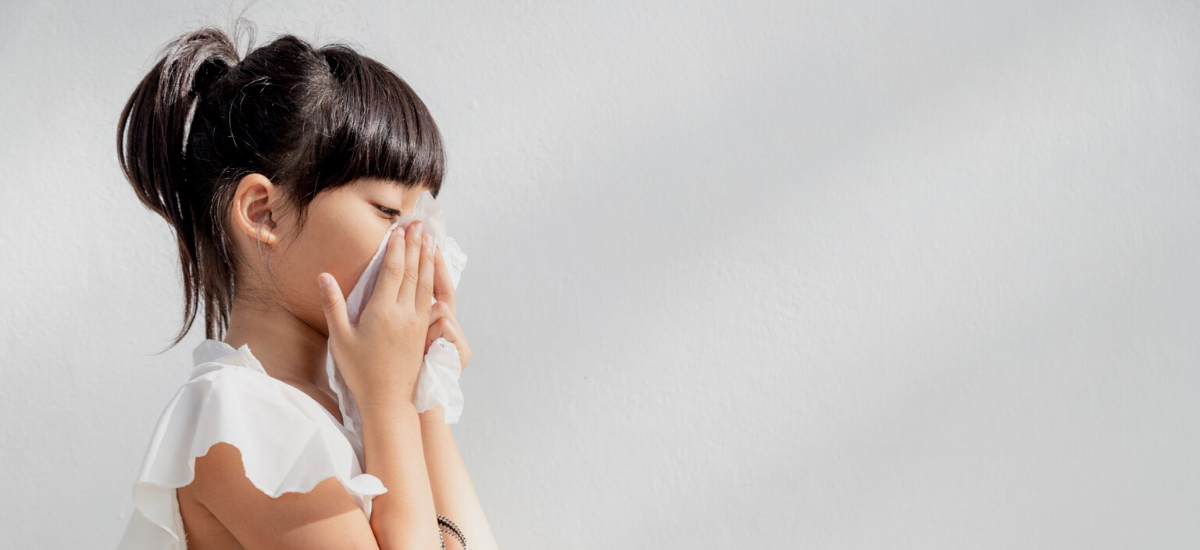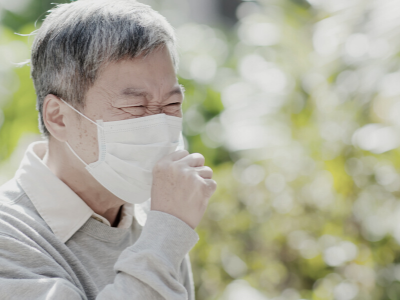Published on 13 December 2022
You may have heard of the 100-day cough or whooping cough, but the medical name for this condition is pertussis – and it’s not just a cough.
Pertussis, the cough with many names. You might know it as the 100-day cough, or whooping cough – but what is it really?
According to Dr Victor Lee, Family Physician at Bukit Batok Polyclinic, pertussis is a highly contagious bacterial infection of the lungs and breathing tubes. It affects people of all ages, but is especially dangerous in babies and infants, where it can even be lethal.
As inferred from its name, the cough can last up to three months, by the end of which most patients will have coughed enough to last a lifetime. It’s spread by coughing, sneezing, and prolonged close contact with infected individuals.
But how does it happen exactly? “Pertussis is a highly contagious disease caused by the bacterium bordetella pertussis,” Dr Lee explained. The bacteria attaches itself to the lining of the upper respiratory system and releases toxins that make the airways swell, causing the notorious cough. Patients are generally contagious from around six days after the first mild symptoms until three weeks after the coughing starts.
Unfortunately, the incubation period for pertussis can be quite lengthy. Most people start to display symptoms within five to ten days after exposure, but it can take as long as three weeks.
Symptoms
Initial symptoms are very cold-like and include a runny or blocked nose, fever, cough, and red, watery eyes.
As the disease develops, more severe symptoms can appear. “Patients with pertussis have sudden episodes of uncontrollable cough fits, often followed by a high-pitched whooping sound as the patient catches their breath, hence the term ‘whooping cough’,” said Dr Lee. “This can be followed by vomiting or exhaustion.”
Dr Lee added that such coughing is often worse at night, making a restful night’s sleep “a thing of the past for a while”. Other symptoms include thick mucus in cough-induced vomit, extreme fatigue, blue or purple skin around the mouth, and potentially going red in the face (more common in adults).
Symptoms in babies
Parents and caregivers take note: certain symptoms are more common in infants and babies, and these should be very closely monitored. Interestingly, Dr Lee shared that babies mostly do not get cough as a symptom of pertussis. Instead, it’s more common for them to get a runny nose, low grade fever, and apnoeic episodes (breathlessness). “The apnoeic episodes for babies are dangerous because they may lead to convulsions, brain damage, or may even be life-threatening,” he added.
Other symptoms in babies to look out for include:
Dehydration
Pneumonia
Seizures
Difficulty breathing
Immediately seek emergency medical care if your child has any of the listed symptoms, has periods of no breathing, starts to go blue in the face or lips, feels a pain in the chest that’s worse when coughing or breathing, or is having a seizure.
In general, you should see a GP urgently if:
Your child is under 6 months and has any symptoms
You or your child has a weakened immune system and has been in contact with someone with pertussis
You’re pregnant and have been in contact with someone with pertussis
You or your child has a worsening, bad cough
While pertussis is becoming far less common in young children thanks to the national childhood immunisation programme, it’s becoming more common in older children and teens.
Treatment
Unlike the common cough, the recovery from pertussis is gradual, lasting for two weeks or more, and may be incomplete. “The coughing episodes may return if the patient gets another upper respiratory infection,” Dr Lee warned. He added that on average, symptoms last for around 50 days.
Unfortunately, there isn’t a cure for pertussis – but it can be treated. In Singapore, the definitive treatment for pertussis is oral antibiotics, specifically macrolides such as azithromycin, clarithromycin and erythromycin (although an alternative is available if the patient is allergic to this class of antibiotics). Especially if given within the first week of infection, antibiotics may reduce the duration of symptoms and reduce the chance of disease transmission.
If your child is under six months, he or she will probably be hospitalised so their symptoms can be monitored closely. Older children and adults will generally be advised to recover at home unless they start to suffer from any of the more severe symptoms. Close contacts within three weeks of exposure may also be given antibiotic prophylaxis.
Identified cases should be isolated from all close contacts until at least five days of antibiotic treatment have been completed.
Here are some tips that may help patients manage their symptoms:
Ensure you get plenty of rest.
Eat small amounts more frequently to reduce the risk of vomiting.
Make sure you’re well-hydrated – soups and juices are great options as well as water.
If you have an air purifier at home, keep it switched on.
Take preventative measures like wearing a mask and washing your hands frequently to reduce the risk of spreading the bacteria.
Vaccination
Fortunately, there is a vaccine for this nasty infection that is given as part of Singapore’s National Childhood Immunisation Schedule to all babies at three months. It’s also recommended that pregnant women get vaccinated for pertussis between 16 to 32 weeks of pregnancy to give their children extra protection.
Written in consultation with Dr Victor Lee, Family Physician, Bukit Batok Polyclinic, National University Polyclinics, National University Polyclinics.



